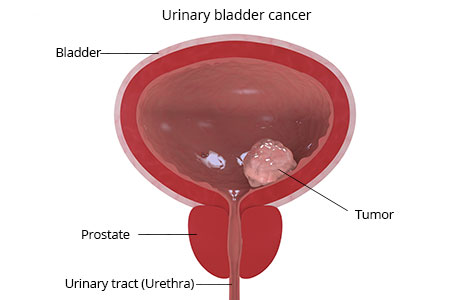Prevention and Treatment
of Bladder and Prostate Cancer
Prostate Cancer – Screening and Early Detection Are Crucial
Prostate cancer is the second most common tumour in men over the age of 50 with more than 67,000 new cases per year in Germany. Early detection is crucial for recovery. Thanks to constantly improved prevention, diagnosis and therapy, survival rates have risen significantly.
As a preventative measure, we recommend the testing of PSA levels from the age of 40. The prostate specific antigen (PSA) is formed by certain cells of the prostate, also called the prostate gland. If cancer cells have formed in the prostate, the PSA level is often high. We also recommend the statutory cancer screening programme from the age of 45 by inspection and palpation.
In our opinion, the sextant biopsy is no longer an acceptable standard for the diagnosis of cancer. We advise the use of an ultrasound-guided twelve-core punch biopsy using local anaesthetic, which not only yields significantly more accurate results, but is also much more comfortable for the patient.
The »CORAZOR®« biopsy device and UROMED puncture needles enable targeted sampling and precise diagnostics, thereby facilitating treatment decisions.
Urinary Bladder Cancer Is on the Rise
Bladder Cancer is the fourth most common tumour in men, and the sixth most common in women. With around 21,400 new cases in men and 7,300 in women per year, urinary bladder cancer is one of the most common cancers in Germany – and numbers continue to grow. Incorporated in this figure are all neoplasia, including clearly invasive findings as well as in situ carcinomas and unclear changes. A typical symptom of a bladder tumour is painless macrohaematuria, defined as the presence of blood in the urine.
Treatment for bladder cancer depends on how far the cancer has penetrated and the degree of differentiation of the tumour. Treatment usually begins with transurethral resection (TUR) of the tumour. Starting this treatment early can significantly improve recovery chances. In some cases, this treatment removes the tumour completely. This procedure is also used to determine the degree of malignancy and the depth of invasion.
We then recommend not only the instillation of chemotherapy agents, but also the use of electromotive drug administration (»EMDA®«*), so that drugs such as Mitomycin M can penetrate deep into the tissue where it can take effect.
Initial studies show that results have significantly improved in terms of recurrence rates, for example, and this is encouraging for the further development of this type of treatment.

* Only available in Germany and Switzerland



